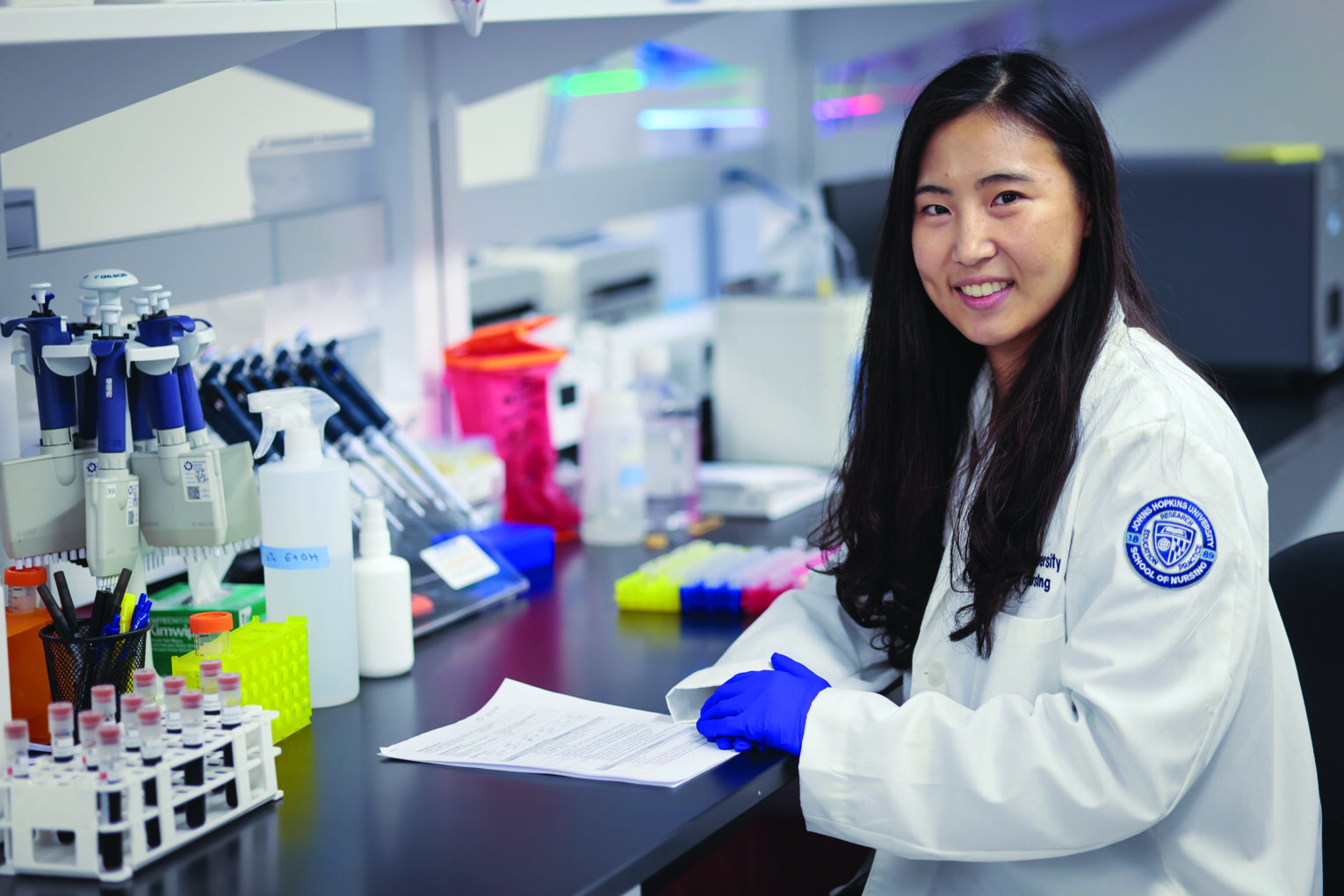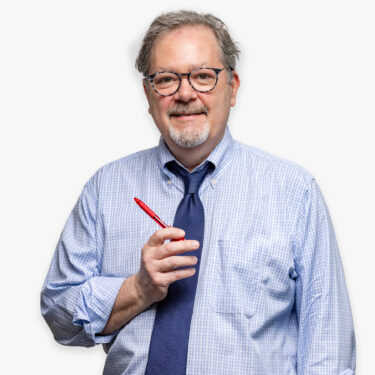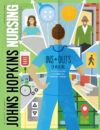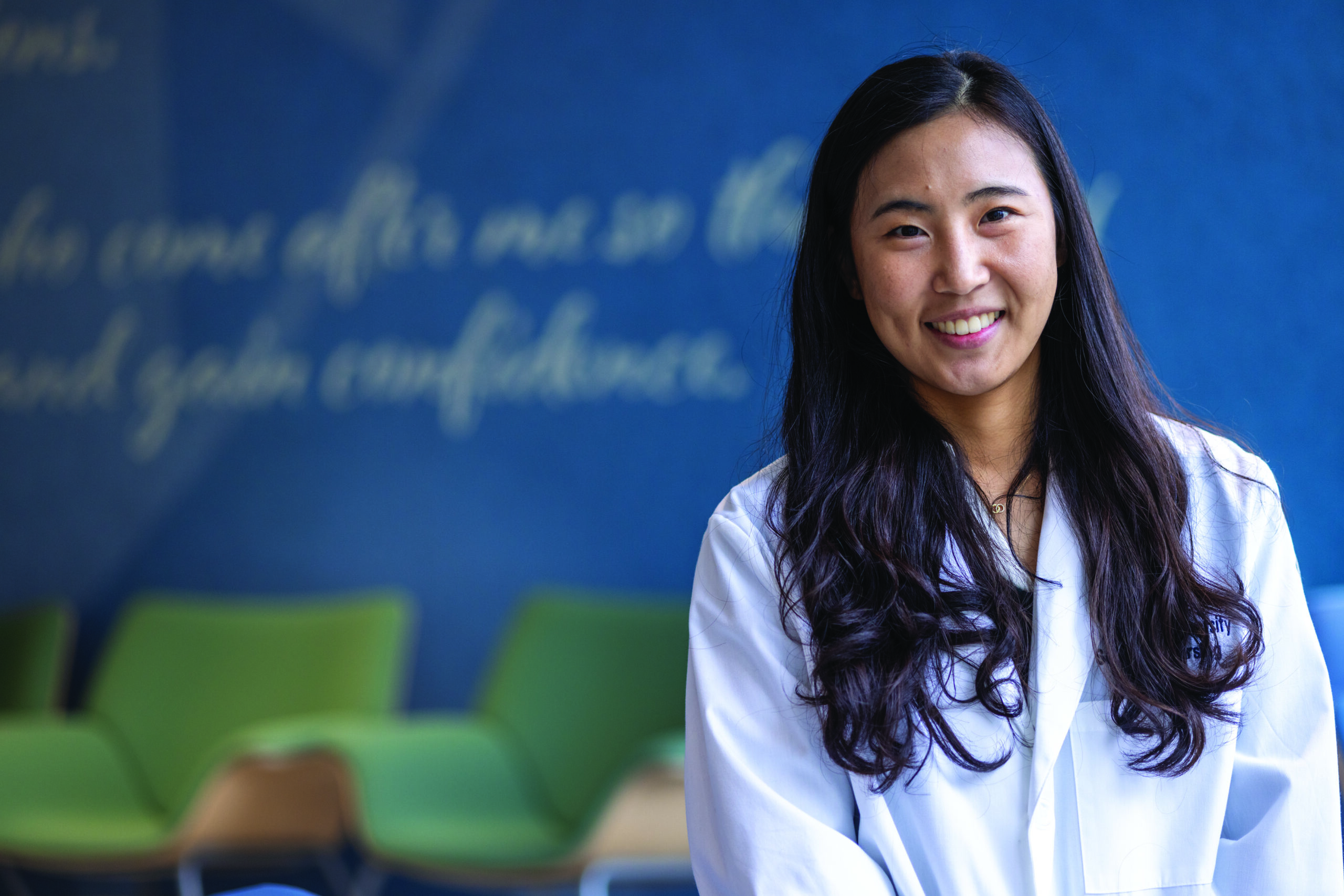For PhD student and researcher Arum Lim, MSN, RN, peering into a tube of blood is not all that different from looking into a patient’s eyes. Without a word, each can tell her so much.
Lim, who worked as a cardiovascular surgery intensive care unit (ICU) nurse in her native Seoul, left South Korea for the Johns Hopkins School of Nursing to research post-traumatic stress disorder and, more specifically, its impact on cardiovascular health risks.
The blood samples come mainly from veterans and active military subjects. Once identified through next-generation sequencing, their biomarker genes and proteins might one day be used to predict and prevent cardiovascular disease. It’s a connection that carries extra meaning for a native of South Korea.
“I could not do this research outside of the Johns Hopkins community.”
To end the direct combat of the Korean War, South Korea and North Korea signed an armistice in 1953. To maintain this hard-won peace, most young men—and some women—are required to train for the nation’s defense. It is out of respect for these veterans’ sacrifice that Lim now works to improve care. “Through my research, I feel like I am giving back,” says Lim, who did not serve in the army.
“We know that stress highly impacts health and particularly cardiovascular health. We use RNA sequencing to find the genes and proteins that can be a vehicle for cardiovascular disease,” she explains, adding her appreciation for opportunities presented to Johns Hopkins PhD students. “RNA sampling and sequencing is a very expensive method.”

She points to the particular generosity of Bloomberg Distinguished Professor Jessica Gill, PhD, MSN, FAAN, whose own research with biomarkers has led to breakthroughs in treating traumatic brain injuries, PTSD, and depression in veterans returning from combat. Lim has also been struck by the collaborative nature of Gill and other researchers on projects large and small.
“I could not do this research outside of the Johns Hopkins community.”
Lim, who hopes to complete the PhD program next year, misses the cardiovascular surgery ICU, “the most meaningful time in my life.” But she accepts the trade-off: one-on-one interactions with patients vs. a broader perspective and impact through research. And she hopes the results of her work in the lab will reach the bedside soon enough.
“Working in a lab with samples is similar to working with patients in a hospital—you must be delicate, careful, and sensitive.” The main difference? “No one’s life depends on my hands, but early detection and prevention can still save lives, just like helping people in hospital beds.” ◼


